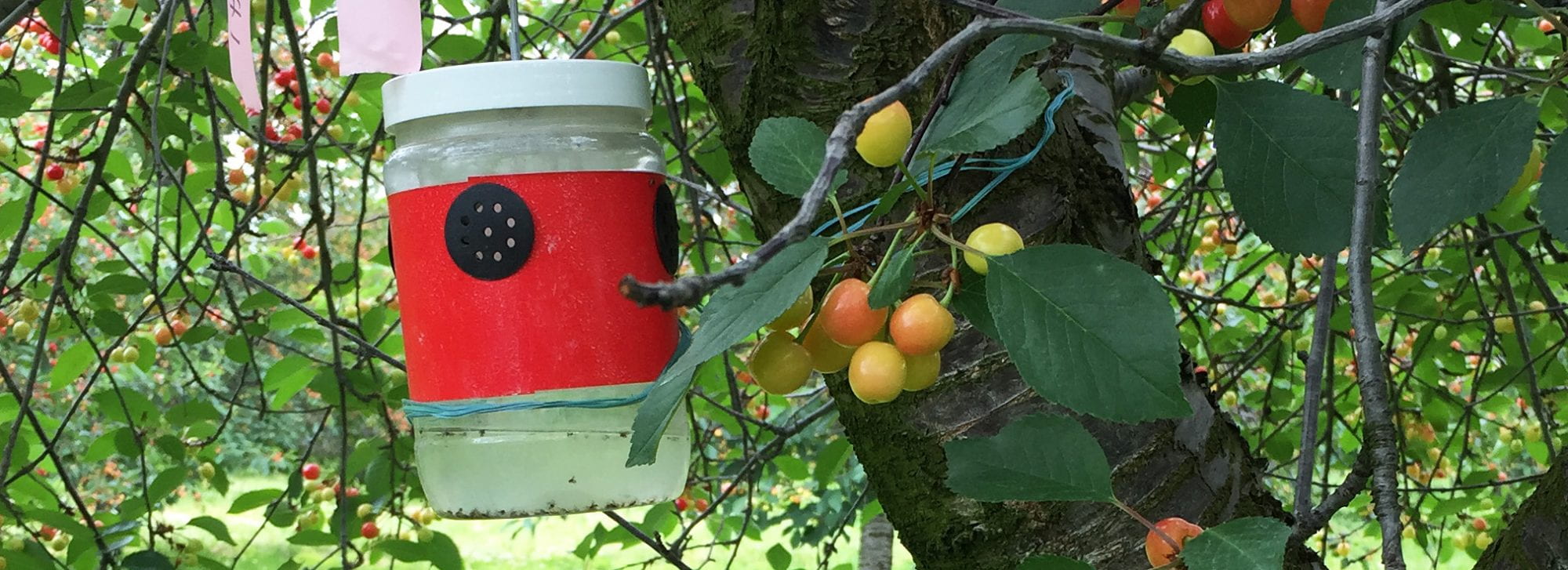First catch of five female and five male SWD were caught in traps set in a sweet cherry planting at the Hudson Valley Research Laboratory. The traps were checked on June 14, 2020 — yesterday. Fruit is starting to change color and will become susceptible to egg-laying soon.

These traps are being monitored by Lydia Brown, research technician with Peter Jentsch, Entomology, Hudson Valley Research Laboratory, Cornell University.
Ten SWD is a considerable uptick in SWD numbers, compared to earlier in the week! And vulnerable cherries are beginning to ripen. It’s time to take SWD IPM planning seriously.
Consider FIRST all the things you can do in the list below to thwart this insect that will enhance the efficacy of the insecticide management program and protect your harvest.
Pest management for SWD includes:
- Mowing – to reduce humidity and niches for SWD harborage and to increase sun penetration.
- Weed management – to reduce humidity, alternate fruiting hosts and harborage and to increase sun penetration.
- Pruning – to reduce humidity and to increase sun and spray penetration.
- Monitoring – to know if SWD is present when fruit is ripening.
- Sanitation – to reduce reproduction harborage and overall SWD population.
- Cold storage – to slow or kill any eggs and larvae in harvested fruit.
Insecticide Quick Guides for NY State are found here (refresh the page to see the latest version):
- For berry crops http://www.hort.cornell.edu/fruit/pdfs/swd/berry-insecticides.pdf
- For stone fruit and grapes http://www.hort.cornell.edu/fruit/pdfs/swd/treefruit-grape-insecticides.pdf
SWD Management, fruit.cornell.edu/spottedwing/management/ on Cornell Fruit Resources.
Learn more about SWD. Knowledge is power. Check out the information on Cornell Fruit Resources Spotted Wing Drosophila, fruit.cornell.edu/spottedwing/.

